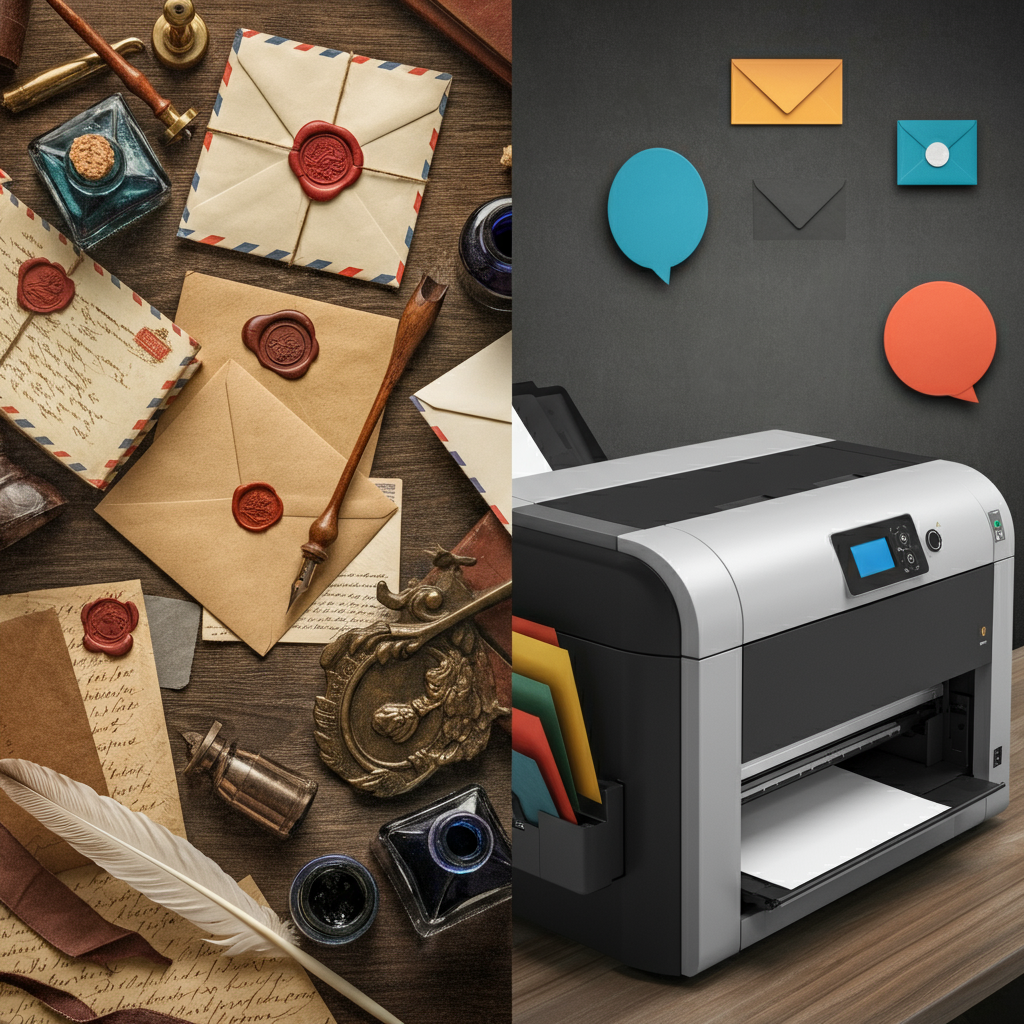The Digital Age: High-Tech Customisation for Everyone
The late 20th and early 21st centuries have been defined by the digital revolution. The shift from analogue to digital has had a profound impact on envelope printing, making advanced customisation accessible to everyone, from large corporations to small businesses and individuals.
Digital Printing Technology
Digital printing, which includes inkjet and laser technologies, creates an image directly from a digital file. This eliminates the need for printing plates, significantly reducing setup time and costs for smaller print runs. The implications for envelope printing have been huge.
Suddenly, printing a small batch of 20 or 50 custom envelopes became just as feasible as printing 5,000. This opened the door for highly personalised marketing campaigns, event invitations, and bespoke business stationery. Businesses could now use variable data printing (VDP), where elements like a name, address, or a personalised message can be changed from one envelope to the next within a single print run.
This level of personalisation makes the recipient feel seen and valued, dramatically increasing the effectiveness of direct mail. An envelope is no longer a generic wrapper; it can be a one-to-one communication tool. Full-colour, high-resolution photographic images can be printed from edge to edge, turning a simple envelope into a vibrant canvas.
The Impact on Design and Creativity
Digital printing technology has democratised design. Online design tools and accessible software allow anyone to create professional-looking custom envelopes without needing a background in graphic design. You can upload a logo, choose from countless fonts, and experiment with colours and layouts in real time.
This has been particularly transformative for weddings, parties, and special events. Couples can now easily design and Custom Printed Envelopes that perfectly match their invitations and overall theme. Small business owners can create branded envelopes that project a professional image, even with a limited budget. The turnaround time for these custom orders is often just a few working days, a stark contrast to the weeks it might have taken with traditional printing methods.
The Future of Envelope Printing
The journey of envelope printing is far from over. Sustainability is a growing priority, leading to innovations in eco-friendly inks and a wider availability of recycled and FSC-certified paper options. We are also seeing a rise in biodegradable window films as an alternative to traditional plastics.
As technology continues to advance, we can expect even more sophisticated printing techniques that blend the physical and digital worlds. Imagine envelopes with embedded QR codes that link to personalised videos or augmented reality experiences.
From a simple, handwritten address to a high-tech, data-driven marketing tool, the envelope has evolved alongside our communication needs. It stands as a testament to human ingenuity, adapting through centuries of technological change while retaining its core purpose: to connect us. The next time you hold a printed envelope, take a moment to appreciate the rich history and advanced technology that it represents.




